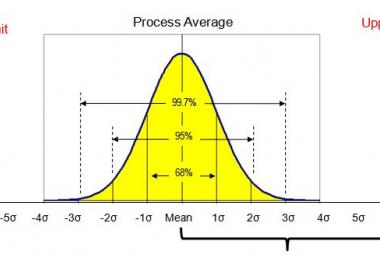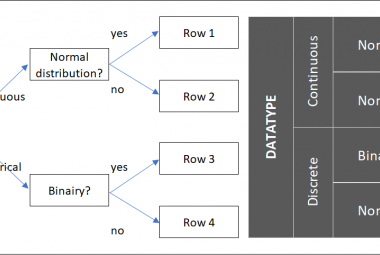One of the most important principles in the Lean Philosophy is to try to create a Pull process. This principle is based on the assumption that one should only produce what is asked for by the customer. This includes two aspects: customer demand determines both the type and number of products to produce in a certain timeframe (1) and the production process produces exactly just enough to fulfil customer demand (2). The Pull principle can be applied in more than just production, it can be applied in the office and even in life.
PULL IN PRODUCTION
The most known Lean tool to facilitate Pull production (when one-piece flow is not possible) is Kanban. A Kanban system is a system of signals which are send upward from the end of the production process through each workstation needed to produce that specific product. Each signal contains both the type of product ordered and the number of products in that order. Since every workstation receives its own production signal it can adjust the number of products to produce per workstation, in case there are inventories. For example, there is a production line of 3 workstations with a stock of 20 items at the 2nd workstation. An order of 100 items arrives at workstation 3 (the last station), workstation 3 sends a signal to workstation 2 for 100 items because it needs to produce 100 items to fulfil the order. Workstation 2 has an inventory of 20 items, which means it only needs to produce 80 items to fulfil the customer order. It therefore sends a signal to workstation 1 for 80 items only.
Traditionally, the kanban cards are actual physical cardboard cards which can be moved between workstations. The demand for one workstation can be put on the Kanban board. Whenever a workstation is finished with one order, the operator can pick the next Kanban card to start his next production order.
PULL AT THE OFFICE
The theory of Pull can also be translated to an office environment. One example of a way of working which is usually full of waste is the way employees handle E-mail. I describe two different kinds of E-mail and the way they can be improved applying Pull principle. E-mails which lead to tasks to do (1) and E-mails which only contain information which might be interesting for you, the For-Your-Info-E-mails (2).
First the E-mails which contain tasks. Based on the pull principle, one would only want to receive the next E-mail when the previous task is completed, to prevent distraction while working on the current task. In this case the employee should determine when he or she has time for a new task and therefore send a signal to receive new E-mail. In real life, the opposite is usually the case. Employees start their day with opening new E-mails, sometimes even while they haven’t even finished yesterday’s task. Most E-mail clients are set to automatically show new E-mails when they are send and pop-ups are shown on the screen to notify the employee of the new E-mail. These settings to me would be labelled as push– not pull.
To create a more pull based E-mail process, employees would first finished their current tasks when they start their day. After the tasks are finished, they manually replicate their E-mail accounts as a signal for new tasks.
The second type of E-mail, the For-Your-Information E-mails, should in my opinion not be in your E-mail box to begin with. First of all, when an employee is involved in multiple projects or department, the FYI-E-mails can become a numerous amount of messages. Second, these messages are not usually arranged by project, which means one has to mentally switch between projects when reading all the updates. Finally, discussions via E-mail are rather inconvenient when E-mails are listed per sending date, which often result in people reading them backwards, newest first.
Applying the pull principle in the case of FYI-E-mail would be to use a social media page to communicate within a group of people. When every project has its own page where team members can post their FYI messages, E-mailing large groups of people will be unnecessary. Every employee can decide for himself whenever he is ‘ready’ for update for a certain project and can read all the discussions at the social media page.
PULL IN PERSONAL LIFE
Push messages do not just exist in the office, they are also part of our daily lives where mediums such as televisions, smart-phones and tablets ask for our attention all the time by sending commercials, push-messages and automatically generated E-mails. This in many cases results in people finding it hard to focus for more than half an hour, let alone focussing on what is really important to them.
When the pull principle is applied to the flow of information, an individual should determine whenever information is brought to him and what information is brought to him. The first step for individuals to achieve this is to make a plan of your activities or even a personal goal of what you want to achieve in the next couple of weeks. When you have a plan, you can only search for- or ask for the information you need at exactly that moment.
Specific examples of push versus pull information flow are, as stated before, found in watching television by channel surfing and the push messages and notifications received on the mobile phone or tablet. Channel surfing is considered push because one randomly absorbs whatever is sent via cable. A more pull way of watching television would be to determine what programs you want to watch beforehand, and stick to just that. Even better is to watch it on-demand, or via internet, which (in the Netherlands - to date) saves you from the horrors of commercials every 15 minutes as well. By determining what programs to watch up front instead of channel surfing prevents you from watching stuff that does not add value to your plan or personal goals.
When it comes to updates from social media websites, blogs or new sites, I advise to switch off all notifications (push messages or E-mails). The pull way to keep informed would be to read all the updates at a moment of your own choice. Besides, when you don’t check for website’s updates without a notification send, the topic is not adding value for you in that time which means it would be a waste to read it anyway.
Finally some words about helping each other learn and grow. Most people are always willing to help each other with solving problems or sharing knowledge, especially in private settings. Helping each other in our society however, is a traditional pull system. When you don’t share whatever you want to learn or achieve with others, chances are small that a friend, colleague or acquaintance accidentally offers you help to move forward!
Continue to:












